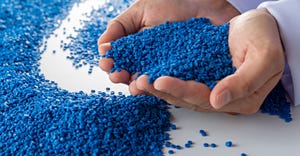Extrusion basics: How (not) to buy an extruder
July 18, 2016

With the K 2016 show coming up, I expect good extruder salespeople to tell us to hurry up and buy before then, because afterward the delivery times will be much longer.
That's probably true, but that doesn’t mean you need another line. Nevertheless, this may be a good time to see if you do.
If you want more capacity, or want to replace old machinery, there are several options in addition to buying a new line:
Buy used equipment, or a mix of used (usually the extruder, maybe the takeoff) and new (controls, material handling, maybe the die and motor).
Buy from Asia. Prices are unbelievably low, but since extrusion machine payoff is a minor cost factor in manufacturing (compared to material and, sometimes, labor), I’d need to be convinced that service, including parts, is quick and competent.
Lease equipment, sometimes with a buy-it-in-six-months favorable price.
Get your product made somewhere else to your specs. This could be as far away as China, or as close as your own state. You’ll need to decide who buys and owns the materials, whose trucks carry what and what tests are run on raw materials and finished products. Sometimes this is done to raise production without new investment, and sometimes to avoid the 24-hour operation necessary for most economical extrusions.
Raise productivity of current equipment. This is at constant product quality (specify what this means). This may require adding controls and data acquisition, or a gear pump/static mixer or a pulley set to raise top screw speed. It’s no disgrace to have a top limit to production, but it’s an error not to know what it is.
Image courtesy Stuart Miles/freedigitalphotos.net. |
Can you sell it? You need to know how much you expect to extrude in the next few years. This is hard to predict, but that’s what sales meetings are for.
After such work, you may well decide you don’t need another line at all. But if you do want more equipment, make sure it does what you need. Check motor power and know how many lb/HP you can expect, based on material. Also, deal with thrust bearing capacity (you need to know expected head pressure) and speed range: Many lines won’t allow full HP at lower speed because that may be too much torque for the system (twisted shafts). In any case, don’t take anyone’s word for how much you can get per hour, unless they know the exact type of resin, the die resistance and some idea of mixing quality.
Remember that faster screw rpm doesn’t necessarily mean more output/hour, as higher frictional heat development may make it undesirable. Also it may cost more, so remember that what counts is cost per unit of good output.
Regarding screw design, that mainly means the dimensions of the screw, notably the channel depths. Who decides, and on what basis? There are computer programs that can tell you the melt pressure at screw tip, melt temperature (not at screw tip but further down—the dual gauges are misleading, especially for temperature), motor current (amps) and the output at several screw speeds. In a big line, which may cost $1 million or more, it certainly is worth a few computer runs before cutting metal.
Don’t forget to select appropriate materials for screw flight tips and barrel lining. Consider boring the screw for later internal cooling (this helps mixing and discourages screw-root sticking, with minimal cooling effect).
If you’ll need preheating, the line must get the hot resin into the hopper as directly as possible, to avoid return of the moisture.
Auxiliaries: Understand the options in screening (continuous, semi, manual) and the screen sizes you expect to run. Do you need or want a static mixer? What type? Get pressure drop data for your material at appropriate temperatures. Same for gear pumps: If you want one, you’ll need expected pressure data before and after the pump.
Controls and sensors: Easy readouts (BIG NUMBERS) and easy referral to stored data are essential today, but someone with the requisite time and ability will need to read and act on what’s there.
Extruders need downstream equipment, of course, and this is too varied to discuss here, but attention must be paid to takeoff speeds, dimensions, online measurement/feedback and other critical features related to the final product.
Don’t forget the costs of delivery and installation. Can you save money by doing these things in house? Make sure there are no gaps in insurance when the equipment is in transit or being loaded and unloaded, for example.
With used machines, try to see them running—or at least plugged in—to ensure that the controls and other electrical parts work. And get as much original documentation as you can. My rough rule is to find out how much a similar new machine costs: Pay one-third of that amount for the machine; allow another third for repairs, missing parts and so forth; and the remaining third is the gain, along with the advantage of being here now. Anything cheaper may be too old (there are exceptions, such as distress auctions) and anything more expensive should be a late model that is being put up for sale, for example, because of failure of the owner company.
Last but not least, be fair but cautious in setting payment terms (how much now; how much on completion; how much on delivery and/or startup; any penalties for late shipment or vice versa). Get quotes from several suppliers to determine current practices, or know this from your own experience.
Allan Griff is a veteran extrusion engineer, starting out in tech service for a major resin supplier, and working on his own now for many years, as a consultant, expert witness in law cases, and especially as an educator via webinars and seminars, both public and in-house. He wrote the first practical extrusion book back in the 1960s as well as the Plastics Extrusion Operating Manual, updated almost every year, and available in Spanish and French as well as English. Find out more on his website, www.griffex.com, or e-mail him at [email protected].
In the fall, Griff will present his one-day practical seminar, "Introduction to Extrusion," in Chicago, Los Angeles and Houston. Topics include the ten (11) key principles of extrusion, plastics chemistry for non-chemists, a review of extrusion hardware, the limits to production rate, quality control of raw materials, simplified rheology, start-up and shut-down procedures and troubleshooting common extrusion problems. E-mail him at the address listed above for more information.
About the Author(s)
You May Also Like




